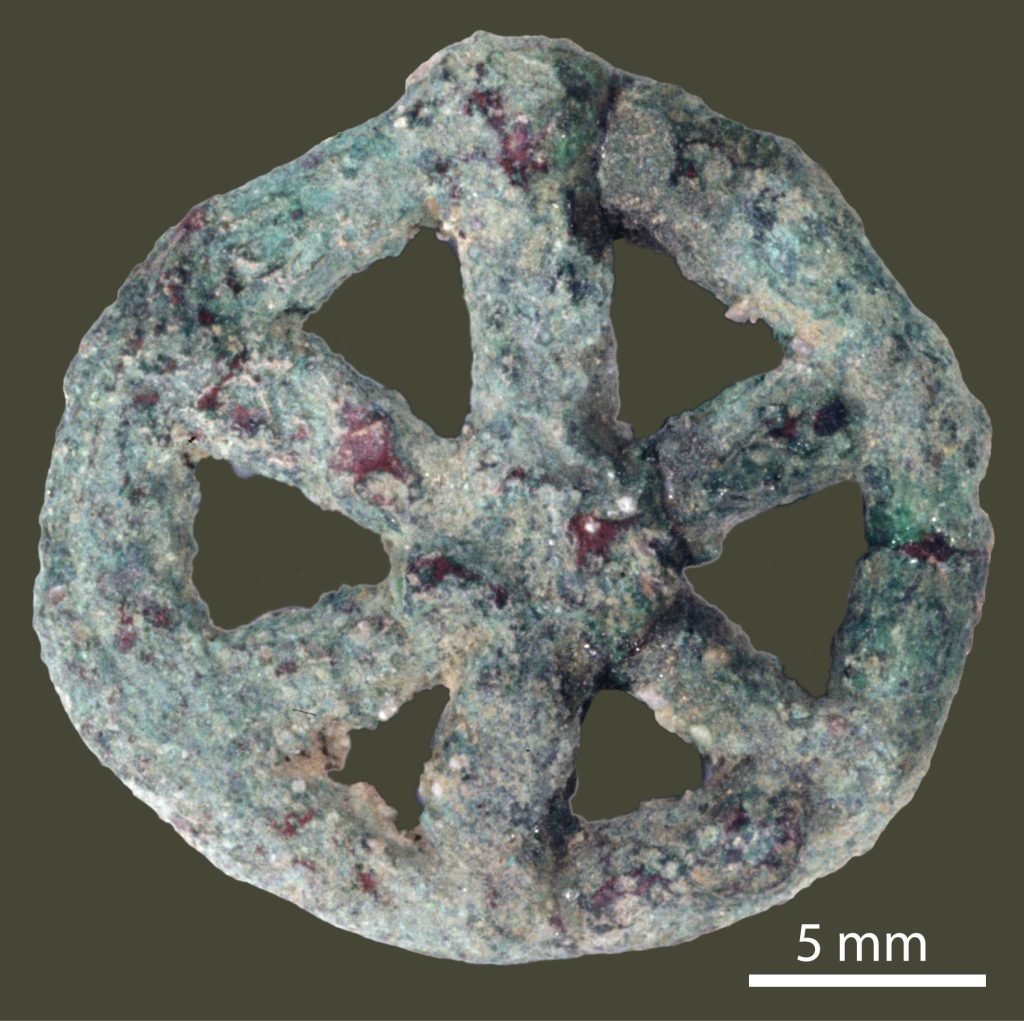What should you do if you can’t remember how you constructed a 6,000 year old amulet, but have misplaced your instruction manual? You can do the same thing a group of researchers in France did: shine a light on it.
The researchers used a technique called photoluminescence spectroscopy to determine how the amulet was made, as they discuss in a paper published today in Nature. Despite the fancy-sounding name, photoluminescence spectroscopy is, at its core, quite simple. You shine a light on something, then measure the light that bounces off back to you. Different materials return different wavelengths of light, so you can use the light to determine exactly what materials the object is made of.
But not just any old light source will do — you couldn’t shine a flashlight on your necklace to find out if it’s 24-karat gold or not. The researchers had to use a beamline at the SOLIEL synchrotron near Paris to examine the amulet.
The amulet, unassumingly catalogued as MR.85.03.00.01, is one of a handful from Mehrgarh, an archeological site in Pakistan discovered in 1974. Mehrgarh was settled several times between 7000 BC and 2000 BC. It doesn’t seem like much, but the simple circular amulet, with six spokes running toward the center and no other decoration, is the earliest known example of a shift in metal casting.
The amulet was created using a technique called lost-wax casting. Unlike earlier permanent mold casting techniques (which, as the name implies, use metal molds that can be used and reused) lost-wax casting is a one-time option. If you wanted to make, say, a circular amulet with six spokes, you would first craft a replica of the object in wax. You would then create a mold around the object, heat it up and pour the molten wax out before pouring molten metal in. After the metal cooled, you’d break open the mold and be the proud owner of a six-spoked amulet.
The amulet from Mehrgarh isn’t a good representation of the complexity of design that can be achieved with lost-wax casting, but it is the oldest example of the technique ever identified. The researchers were able to confirm that the amulet was cast as a single piece of very pure copper.
Because of the complexity of the (at the time) newfangled casting technique and the quality of the copper used, the researchers suspect that the amulet carried some kind of symbolic or ceremonial significance. But they can’t be certain, because while photoluminescence spectroscopy may tell us what an object is made of and even how humans crafted it, it’s still not able to tell us why.









